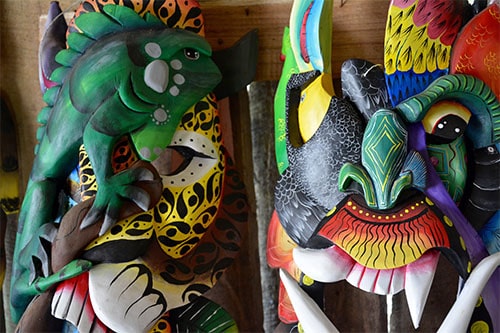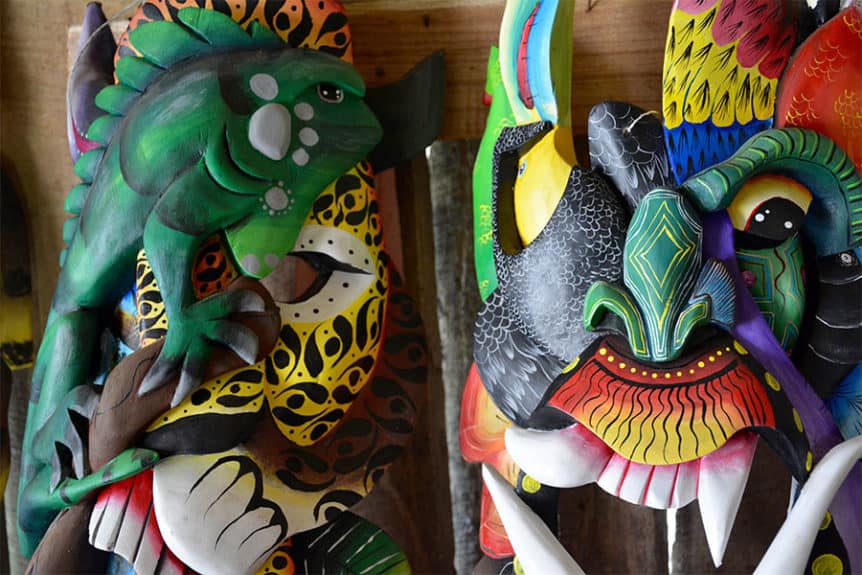
In the center of Costa Rica, you will find its capital, San Jose which is also the largest city in this biodiverse country. San Jose is known for its arts, culture and history where you are welcomed with world class museums, theatres and streets lined with historic buildings and beautiful green parks.
As you venture into San Jose’s urban jungle you will come across a treasure, the San Jose Central Market in Barrio Hispano. The central market sprawls across a full block making it the largest market you will find in San Jose located downtown on Avenida Central.
The San Jose Central Market is a relic to the local people and part of their heritage, it was first established in 1880 and continues to host thousands of people daily. Although the establishment is historic it is wheelchair accessible and allows for one to maneuver through the long aisles. When planning your visit do note that it is open Monday to Saturday and usually closes on Sunday.
As you enter the market you are immediately immersed into authentic Costa Rica, so be prepared to spend at least half your day exploring and losing track of all time. A sea of vibrant colors will greet you and hundreds of Costa Rican flags hang from the shops reminding you of the pride of the hard-working people. There is no wrong way to turn in this circular maze as each direction will bring joy to your senses.
If you are visiting in the morning then it is the perfect time to try one of the numerous sodas lining the market for breakfast. You can even find the oldest soda here in the market from 1893, just look for Soda Tapia. Sodas are small, casual, typically family-run restaurants, similar to a diner in America serving traditional Costa Rican food. One of the most traditional foods to try is gallo pinto, a take on rice and beans. It is a staple on the local breakfast plate and there is no better place to try it than this authentic market.
It is a mixture of rice, black beans, onion, peppers, various spices and coriander served with sour cream, eggs and fried plantain. A fresh fruit juice pairs perfectly in the morning choosing between maracuya, cas or tamarindo if you want to try something delicious and different. All sodas may have their own variation of the typical Costa Rican breakfast; however, you will never be disappointed as sodas always serve the best traditional food.
The central market is bursting with colorful stands of every imaginable souvenir and local handcraft. The stalls display hand-painted traditional ox-carts, wooden art, religious figures, textiles and clothing to local books and bumper stickers awaiting your suitcase. Stuffed sloths, monkeys and lizards hang off the walls alongside beautiful hand-carved art, pottery and leather goods, any souvenir you desire is somewhere in this central market waiting for you.
Take your time and explore many of the stalls before purchasing, you may find a better deal at one vendor than another. The vendors are friendly and interacting with them will give you the opportunity to see how welcoming the Costa Rican people are.
The essence of Costa Rica is its coffee because of the high quality and amazing flavor profile making it a great souvenir to buy here or savor while you stroll the aisles. There is no shortage of coffee to find in this market because of its popularity and the aroma in the air will lead you to the one you want.
An authentic experience would be to try Costa Rica coffee in the traditional brewing method through a coffee sock filter. Relax and enjoy this delicious practice while sampling the national favorite dessert of tres leches or even the savory rice pudding known as arroz con leche. The desserts are as endless as the vibrant aisles with fruit-filled empanadas, coconut flan, custard tarts and chocolate-covered coffee beans.
Fish and seafood merchants offer a large range from shellfish, octopus, whole fish or simply fillets and everything you need to make the perfect ceviche. However, the central market is known for its amazing ceviche and if you aren’t yet full you may want to stop and sample this well-loved, simple, traditional dish.
Butchers offer all cuts of meat at their refrigerated counters or stop and pick up some fresh honey and cheeses at yet another vendor. Around another turn, you may find medicinal herbs offering natural remedies for countless ailments the options in this labyrinth are endless.
The freshest of local fruits and vegetables give the market a mosaic of every color in the rainbow. Baskets of tropical fruits line the walkway with papayas, pineapples, apples, limes, mangoes and melons. Bananas hang from the stalls creating a tropical jungle effect.
There is one fruit you may not be familiar with but is worth taking a moment to try, the rambutan. Often referred to as mamon chino, it has a red exterior and has what looks like spikes all around it, however, they are not sharp.
There is no preparation needed to eat this exotic looking fruit, simply peel off the unique exterior and enjoy this new treat while standing in the aisle. It has a similar taste to a grape, is sweet and mild and is a relative to the lychee. During their peak season, they are very inexpensive and you most likely will want to buy a bag full to snack on later.
Before you leave this unforgettable market don’t forget to treat yourself to their beautiful flowers to brighten your room with the colors of Costa Rica as a memory of your unforgettable day. This San Jose central market truly does have everything imaginable but what will stand out in your memory is the atmosphere, energy, vibrant colors and experience. Whether you leave with souvenirs or simply memories, this old market gives you a glimpse into the spirit of Costa Rica and the opportunity to be a part of their special culture.
Planning Your Visit
When planning your visit do note that it is open Monday to Friday from 6:30 am until 5:45 pm, Saturday’s until 6 pm and closes on Sunday. It is best to leave your car rental at the hotel and take a taxi or uber as you may find yourself spending most of your time searching for a place to park. The market is in an extremely busy location, the main street in central San Jose and does not have a designated parking lot

